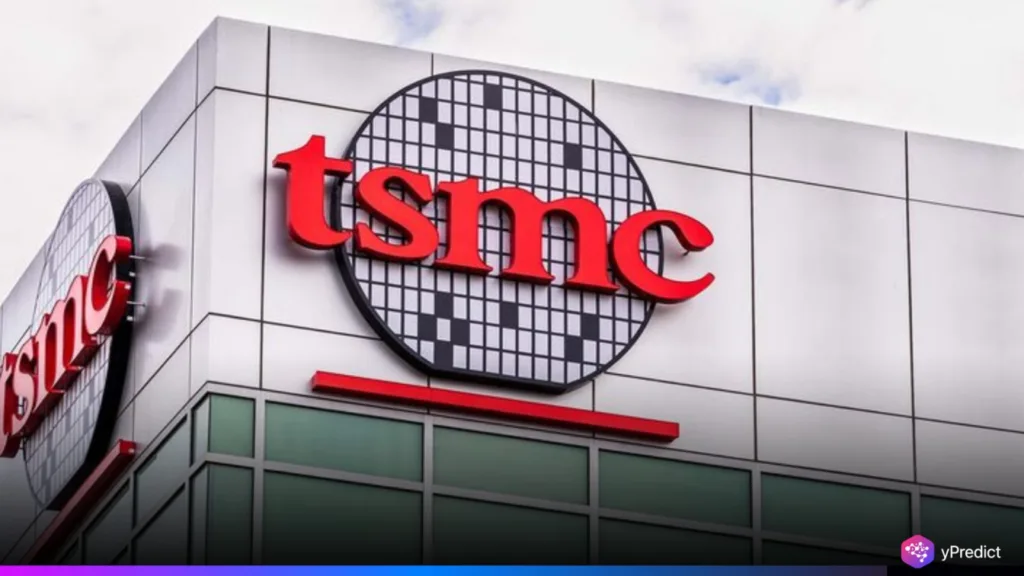
Taiwan Semiconductor Manufacturing Co. (TSMC), the world’s top chipmaker, reported a 61% surge in profit for Q2 2025, driven entirely by the ongoing AI boom. The company’s financial release confirmed that its revenue jump came from explosive demand for advanced AI chips, primarily for clients such as NVIDIA. As AI models continue to grow larger and become increasingly compute-intensive solutions, major chip manufacturers like TSMC are at the forefront of this technological momentum. The company’s uptick in revenues shows the global momentum of the AI space, while at the same time raising questions about longer-term sustainability and economic disruption.
AI Boom Drives Soaring TSMC Revenue
TSMC revenue hit new records in Q2 2025, fueled by an unprecedented increase in chip orders linked to artificial intelligence. The company reported that its most profitable segment was its advanced node production for AI-based applications. Chips that are necessary for training a large-scale generative model, enabling cloud infrastructure, and powering generative systems. The demand surge came primarily from NVIDIA and other AI leaders expanding their data center capacity.
With next-gen AI systems requiring billions of parameters and real-time processing, TSMC’s role in the supply chain became even more critical. Its strength in 3nm and 5nm nodes helped the company secure bulk orders, locking in high-margin business. TSMC executives confirmed that the AI boom, rather than broader semiconductor demand, was the clear driver behind this quarter’s performance. This narrowed dependency shows how central AI has become to the chip sector’s profitability in 2025.
Statista Report Underscores Market Expansion
A recent Statista report puts the AI-driven spike in TSMC revenue into clearer context. As per the report, the total global AI market size was valued at $184 billion in 2024 and is expected to reach $826 billion by 2030, indicative of an annual growth rate of nearly 50%, making artificial intelligence the fastest-growing technology sector in the world.
Every available supplier or hardware company, whether a Big Tech company, a medium-sized firm, or an AI startup, is increasing hardware spending in order to keep their algorithms updated. However, the Statista report also flagged potential limits, warning that growth may slow if chip scalability, power constraints, or infrastructure issues begin to surface. This could eventually temper the revenue spikes seen by AI-dependent suppliers like TSMC.
Job Disruption Clouds AI’s Economic Impact
While the AI boom boosts revenue for tech manufacturers, it also brings significant economic challenges. A 2024 IMF study referenced in the same Statista report predicted that AI could disrupt 60% of jobs in advanced economies. Half of those roles might benefit from productivity improvements, while the rest face automation risk. This duality provokes more significant questions about the basis of TSMC’s advancement. If AI adoption proceeds at the same rate, economic inequality and labor market displacement may increase, which could change consumer behavior and spending habits in essential markets.
Although at present, TSMC is profiting from AI acceleration, the broader economic ripple effects may eventually change demand because of these forces. Investors are looking closely to see whether growth fuelled by AI can continue to be sustainable with increasing social and political scrutiny of job loss and workforce rebalancing. The revenue highs seen now may not reflect long-term equilibrium.
Sustainability of AI Demand Faces Growing Pressure
There are some serious questions surrounding just how sustainable AI chip demand is – we are finally to the point of questioning the next status of chips, AI, and demand elasticity. There are analysts now talking about elevated levels of power consumption, cross-border regulation, and geopolitical pressure in the form of action on sanctioned and restricted trades, which pose real limits to the knock-on effect of demand. AI training requires phenomenal amounts of energy – power grids are stressed and unusable at high temperatures in a lot of places, which may impose real limits to scaling production.
If these trends intensify, TSMC may encounter hard structural bottlenecks, but it will still be chasing demand. Regardless of these factors, the Q2 2025 report from TSMC illustrates that the AI boom is still the primary trend in the semiconductor industry. TSMC’s corporate experience illustrates how quickly the semiconductor short-term accumulation is tied to artificial intelligence.






